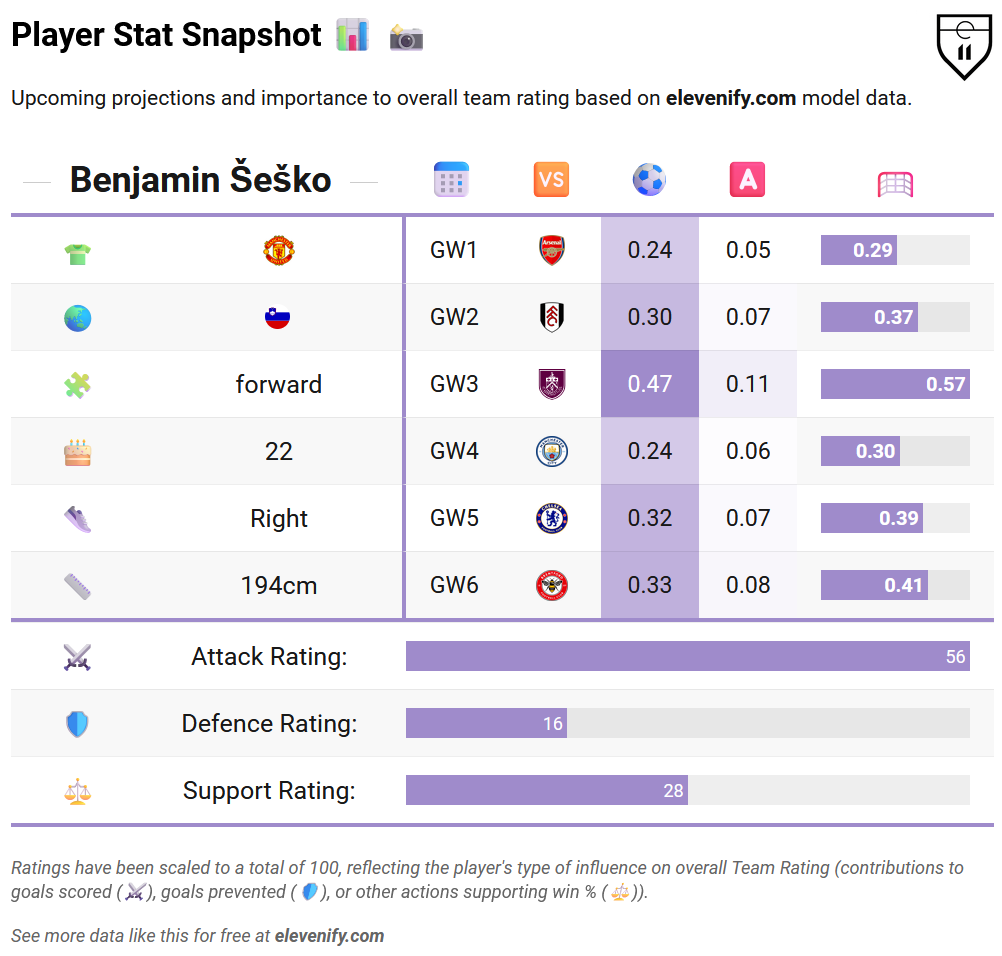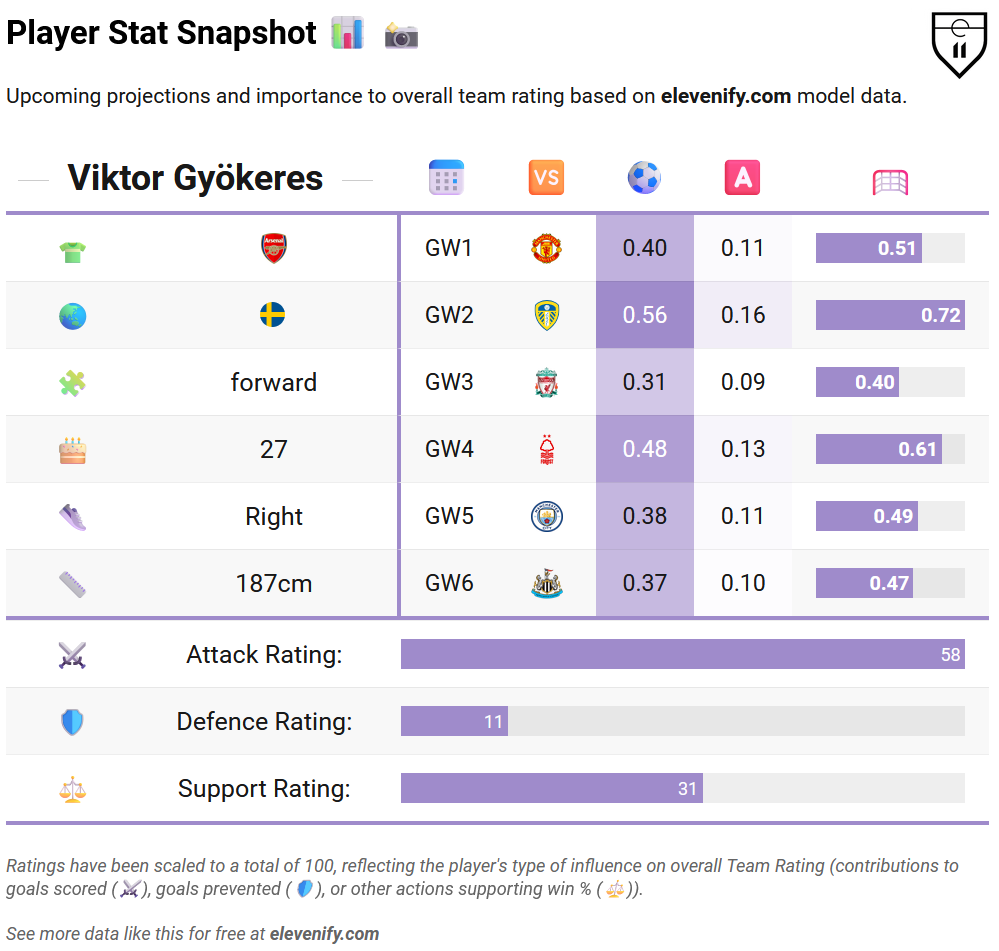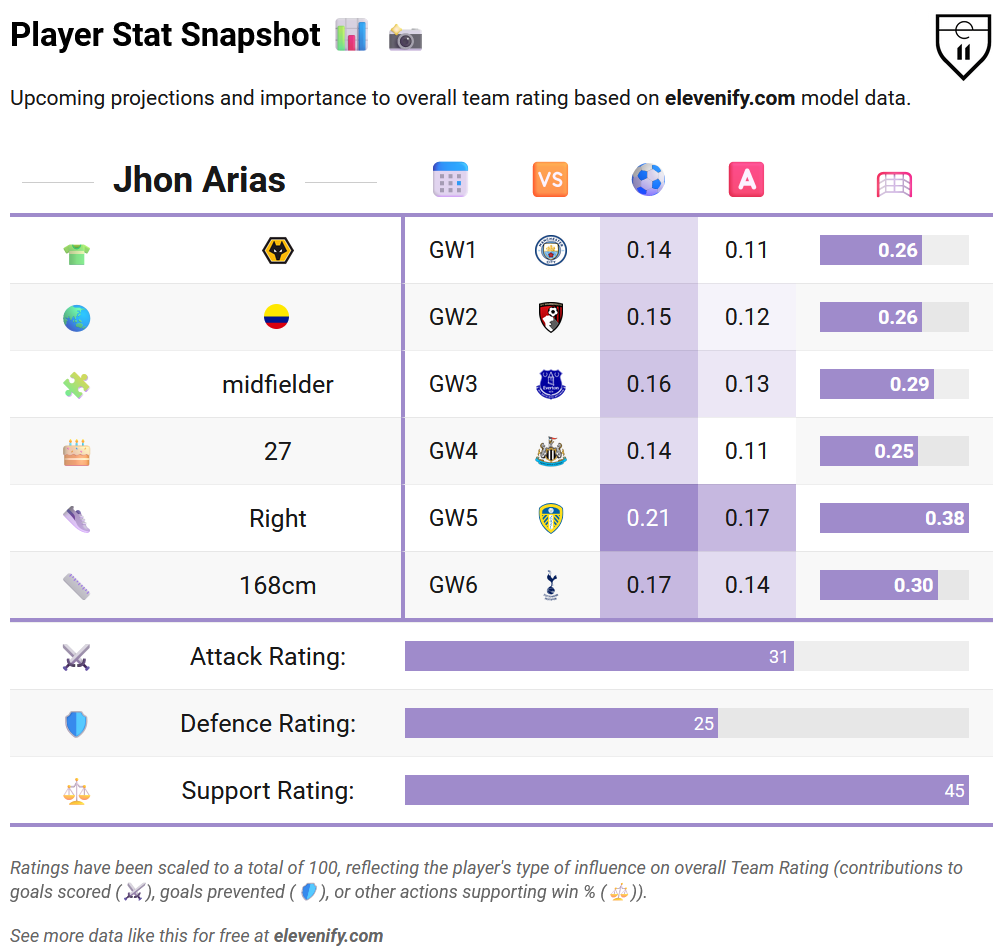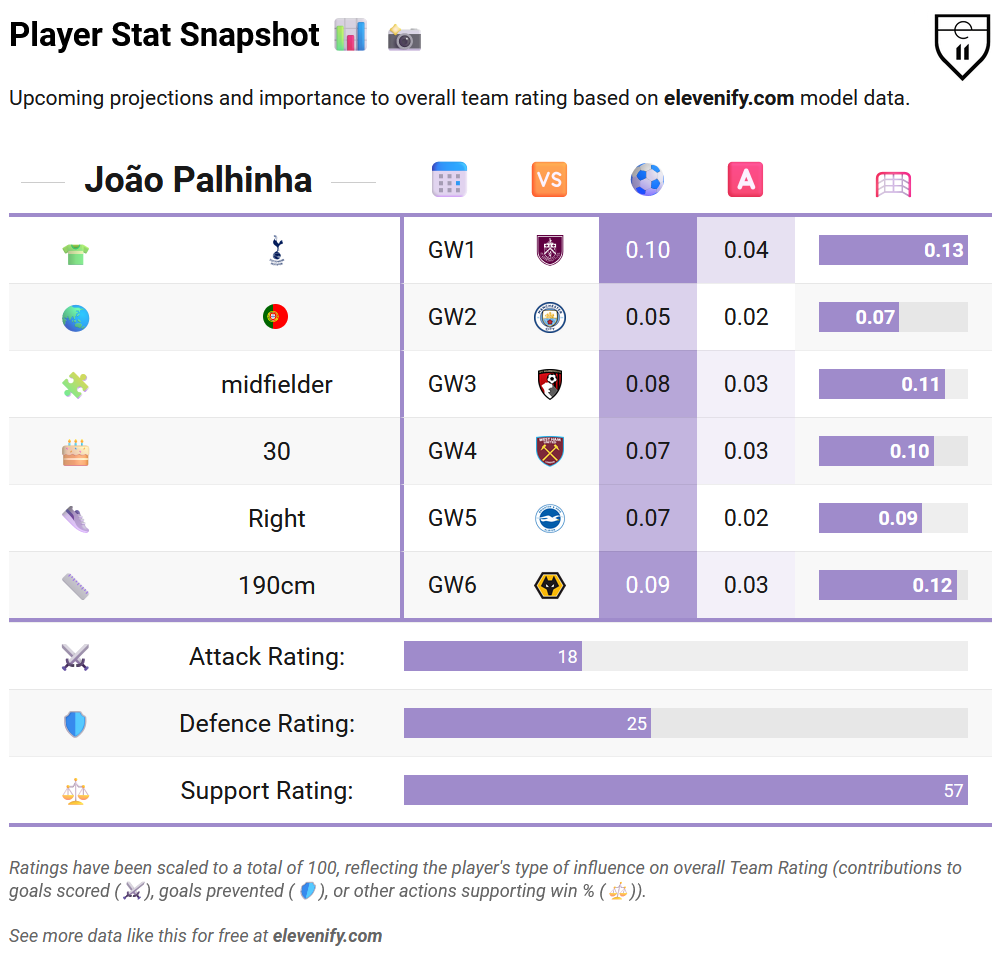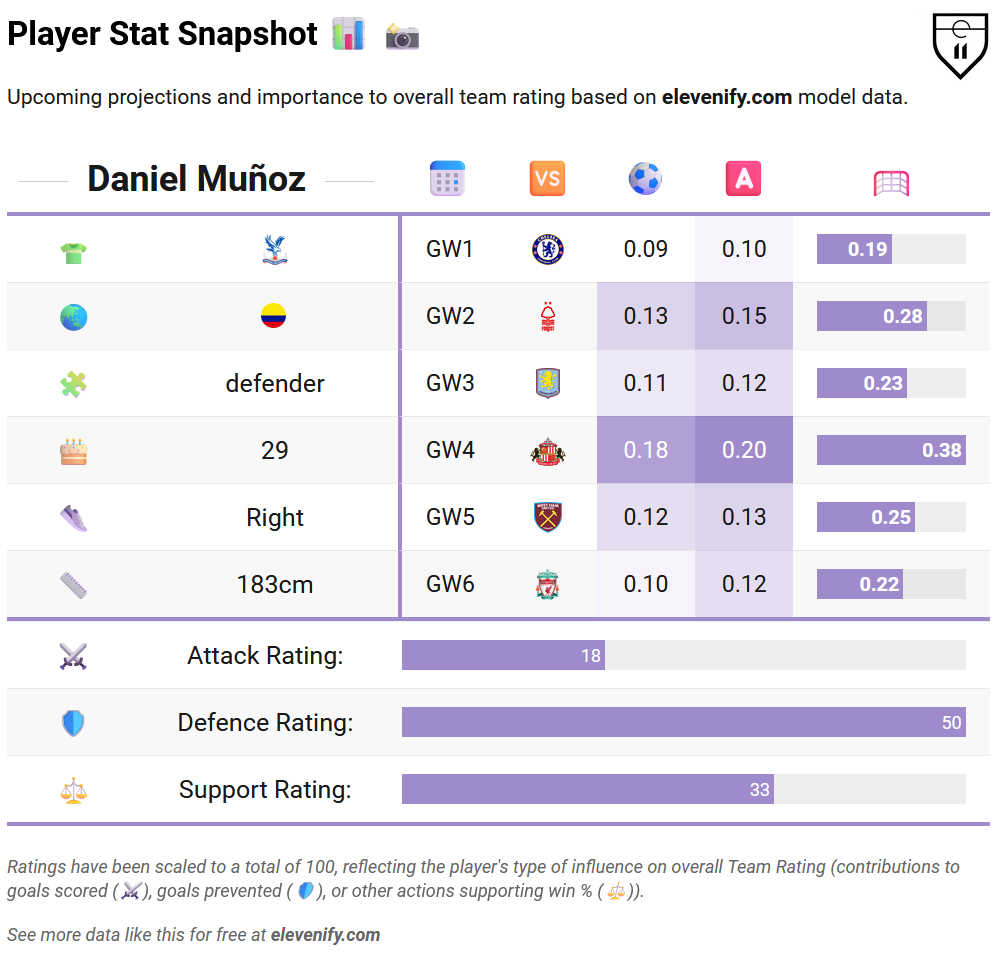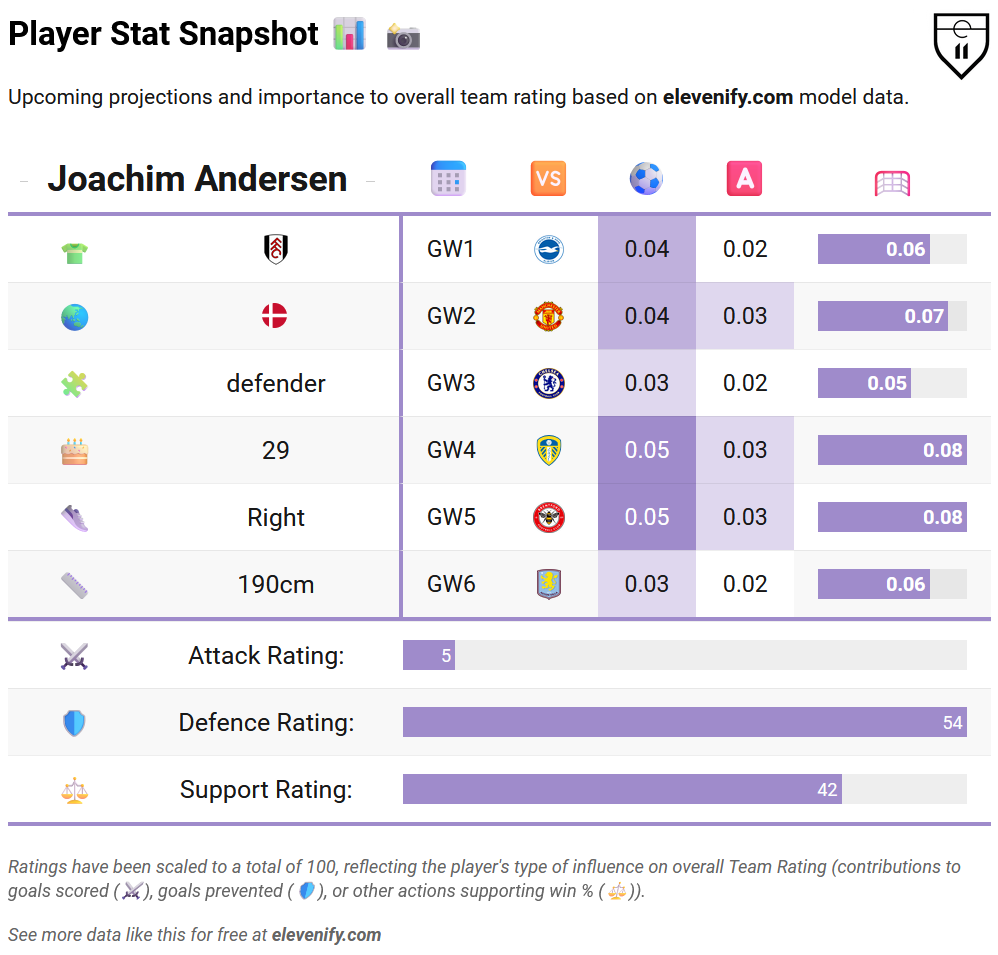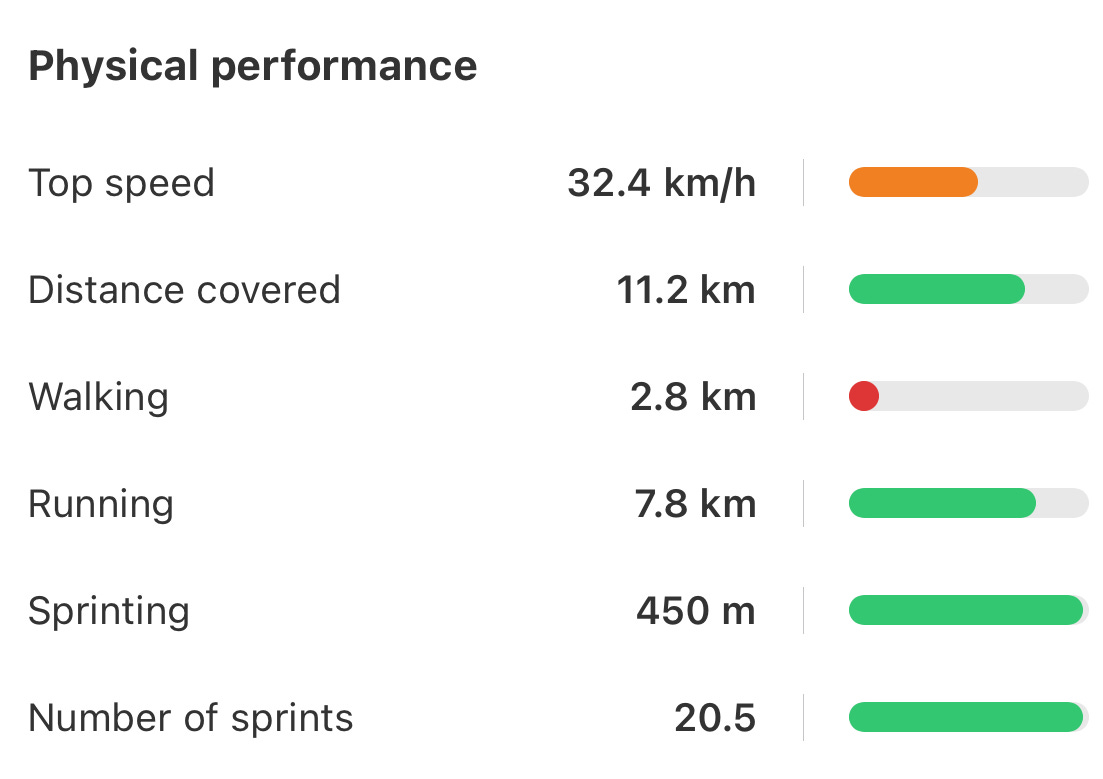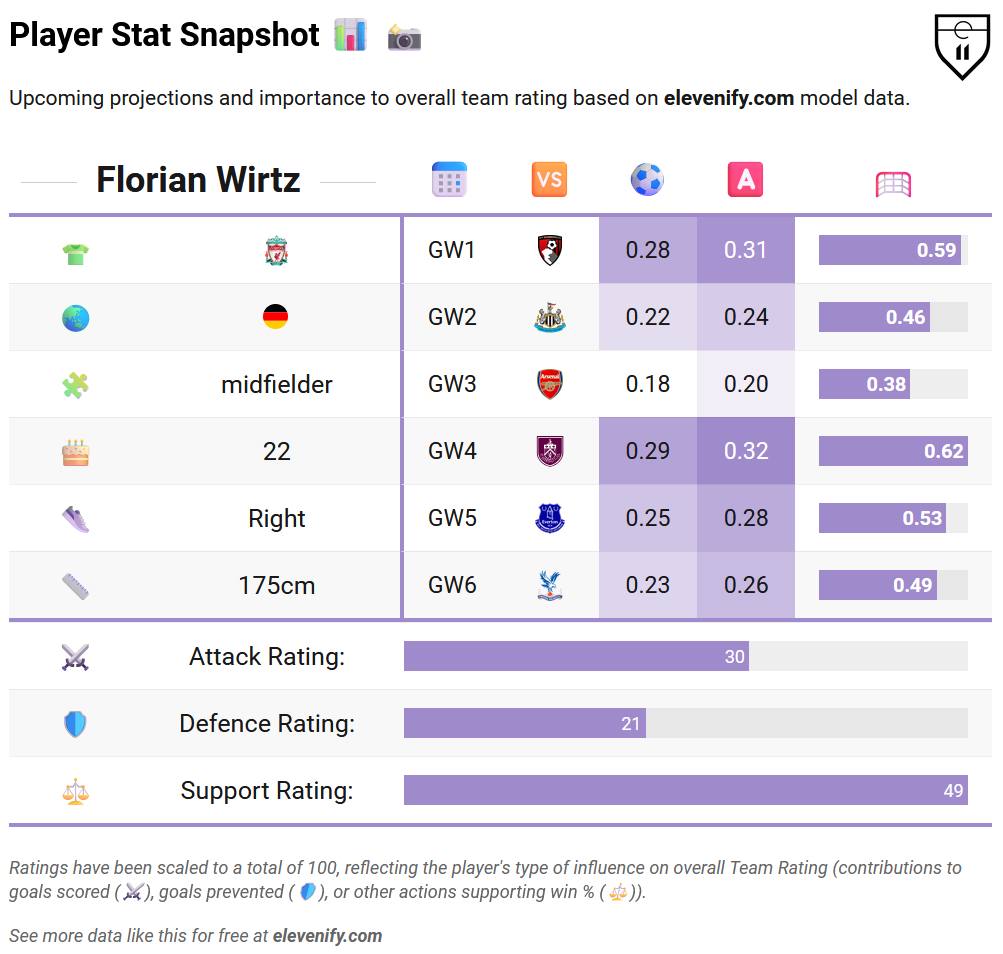25/26 #01: Snapshots
Trying to understand player impact on Team Rating.
All Premier League data is on one single page here.
I’ve been developing a way to clearly show how players may contribute to Team Ratings in a ‘fun’ and easy-to-digest format.
I’ve developed a ratings system that works for me. It’s built around three broad categories:
⚔️ Attack Rating: elements directly important for scoring goals (think about stuff like: goals, assists, threatening passes and runs).
🛡️ Defence Rating: elements directly important for preventing goals (think about stuff like: tackles, blocks, goal-line clearances).
⚖️ Support Rating: this is necessary to recognise all the other indirect contributions a player makes to support their team’s Attack and Defence Ratings.
These categories are chosen because they align with my belief that analysis, whether tactical, data-driven, or otherwise, should always connect directly to the actual effects on the likelihood of winning.
The ratings are scaled so the total equals 100, representing a player’s relative influence on Team Rating. They are not absolute values for better/worse comparisons.
For example, if two players from different teams both have an Attack Rating of 60, it means they contribute about the same relative importance to their own team’s attack. It doesn’t mean they are equally skilled or productive; it simply reflects that their impact on their team’s attack is similar.
To illustrate further, let’s walk through some examples:
Forwards
Benjamin Šeško and Viktor Gyökeres
As expected for players resembling a no. 9 striker, their ratings are heavily weighted towards Attack, with smaller contributions in Support and minimal in Defence.
Small differences hint at stylistic variations. For example, Šeško’s slightly higher Defence Rating aligns with what you might expect from a generational aerial talent.
Midfielders
Jhon Arias and João Palhinha
I think Arias and Palhinha are an interesting comparison because both skew towards Support while contributing equally to their team’s Defence Rating.
This might feel odd for Palhinha, but under this ratings system, his work is less about directly stopping goals and more about keeping the team structure functioning (albeit with a defensive slant).
This is somewhat inferred also by the way we see Arias is much more likely to contribute to scoring goals compared to Palhinha.
Defenders
Daniel Muñoz and Joachim Andersen
An interesting comparison because it really pulls out the differences you might see in defenders. Andersen maxes out on Defence and Support, reflecting his status as one of the league’s best passing centre-backs.
Muñoz, meanwhile, keeps a high Defence Rating while also being heavily involved in the final third (for a defender), a testament to his remarkable physical output. His p90 data from last season, available in the FotMob app, backs this up:
Bonus: Florian Wirtz
Sharing a last bonus one because it is interesting. There is a good chance this Attack Rating is not what you expected when thinking about Florian Wirtz. A couple of reasons why his rating might be more evenly distributed than we anticipated:
My projection model suggests his role in that Liverpool team will lean slightly more towards creation than scoring.
Wirtz does a lot to support the game generally. He touches the ball a lot and is happy to have it under pressure. He averages 64 passes attempted and 61 passes received per 90.
Even after league adjustments, his defensive work should translate well enough. Last season, he ranked in the 97th percentile for StatsBomb’s possession-adjusted pressures.
That’s all for now. This concept is useful for me, and I hope it’s useful for others. If there’s interest, I can collect player suggestions and make another post in the same format.
Much love ✌️💜

